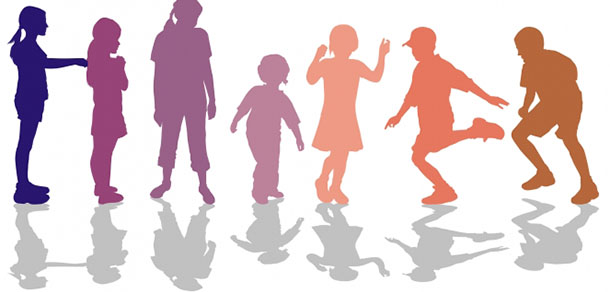In a world where medical technology allows families to see gender-related anatomy of a baby during pregnancy, a child’s gender is often assigned and celebrated before he or she is even able to live outside of the womb.
The majority of children readily identify with their natal or birth sex, regardless of the level of emphasis his or her parents put on typical gender norms. But what if your child’s interests and behaviors do not fall into those typical gender norms?
What if your natal male child prefers female clothes, dolls, long hair? Or your natal female child prefers to have short hair or wear swim trunks instead of a tankini to the pool in the summer?
Gender variant children display consistent and persistent behaviors that are not normally associated with their natal gender. In today’s society, we are witnessing this occurrence more and more. Gender-variance is not more common, but more visible. Parents are more open to allowing children to explore their gender identities and supporting their needs in doing so.
A video that was broadly shared and discussed in national media a couple of weeks ago has ignited a level of conversation about gender variance that we have never seen before. If you haven’t seen it, you should watch the Whittington family’s video about their son Ryland.
Ryland was born a natal female and early on told his parents that he was no such thing. The Whittington family is not alone, as there are many children and families experiencing the same thing. If a child is gender variant, it is not unusual for parents to begin to see consistent and persistent behaviors in their children as early as 2-3 years of age, as in Ryland’s case.
At that age, children know who they are, but may not have the language to express it. Therefore, parents need to pay close attention to signs, cues and behaviors. Ryland was born deaf and immediately when he was able to speak, he declared “I am a boy.” His parents noted that he behaved as a tomboy and had gravitated towards things more typically associated with a male child from a very young age.
Parents, like the Whittingtons said they did, often think that maybe it is ‘just a phase’ and their child will ‘grow out’ of these behaviors. And some children do.
But, scientific evidence supports that gender is not learned, not chosen, not due to emotional or mental disorder and not determined by parenting. Gender variance occurs in children due to a genetic propensity for these behaviors.
Gender Dysphoria is the medical term for persons who experience significant clinical distress between their natal gender and the gender they identify with, or their expressed gender. These children, as parents soon learn, are quite insistent about their gender identity.
Gender-variant children may identify as transgender early on or later in life. Transgender is an umbrella term for individuals who experience their gender differently from their natal gender. These individuals experience a persistent discomfort with gender identity, causing extreme distress. Gender identity, not to be confused with sexual attraction, is one’s psychological sense of gender. As Ryland’s parents eloquently stated, Ryland’s body is female, but his brain is male.
Children who experience gender variance and/or identify as transgender often feel pressured by family, peers and society to conform to their natal gender. Allowing a child to be his or herself and explore and express their gender identity can help avoid depression, anxiety and suicidal thoughts/attempts that are often reported by families of gender-variant children. The Whittington family realized that Ryland began experiencing shame associated with his gender and they responded by allowing him to express his gender as he felt most comfortable.
As a member of the team that works with children and families in our Transgender Health Clinic, I was encouraged by the Whittington’s support of Ryland and his emotional needs.
In my role as a social worker who supports children and families who are navigating gender variance, I am encouraged by the interest that was garnered by this family’s story and the conversation that it sparked. While not all conversation regarding gender variance is productive or supportive, it is conversation nonetheless, and that in and of itself is a step forward. The Transgender Health Clinic at Cincinnati Children’s serves the needs of families navigating gender variance. We are in a unique position to provide medical and psychosocial support for these children and their families. It’s time for us all to start being a part of this national conversation. I hope you found the video as enlightening and inspiring as I did. Look for my next blog post about specific ways to support gender variant children, as we continue this critical conversation.
Editor’s note: The Transgender Health Clinic is part of Adolescent and Transition Medicine. For more information about the clinic, please comment below or find contact information here.




Hi Sarah,
My colleagues and I in the Mariemont High School Counseling Department would be very interested in talking to you more about gender variance. In the past few months, a few students have come forward to tell us that they are transgender and our teachers are confused and some are having a hard time accepting any of their views and needs. I would love to become better educated, myself, on gender variance to be able to give more information to our teachers. Is there a time we could meet or even have you come to Mariemont High School to talk to the counseling staff of our district- this is about 10 people total.